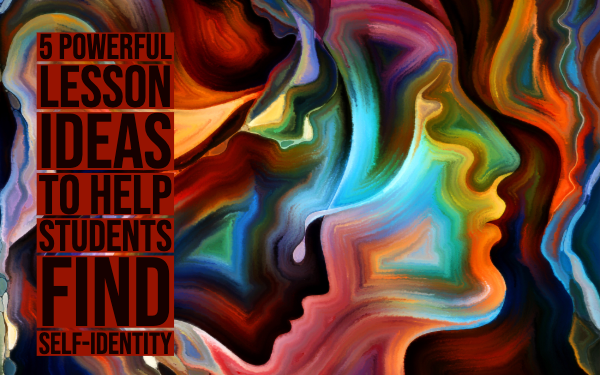5 Powerful lesson ideas to help students find self-identity
 Lucie Renard —
Lucie Renard —
Your personal identity refers to who you are as a human being. It gives you support and it guides your way when making important and less important choices in life. Everyone develops his or her identity at a young age. But developing a personal identity isn’t always an easy quest. A lot of students struggle with finding out who they really are and what really matters to them as a person. Even more importantly, school has a huge impact on the development of a student’s self-identity.
Katja Schipperheijn talks about identity development in her new book Digital Citizens. In this blog post, I will share lesson ideas on self-identity from this book. I’ll show you how you can encourage your students to speak for themselves and to be open about who they are, and you’ll learn how to help them discover their self-identity and self-image.
The teacher’s role in finding a student’s self-identity
Every aspect of the life of a student plays its own role in identity development. It’s important to keep a clear mind and to follow up on a student to lead them in the right direction, without deciding what kind of person that students should be.
As a teacher, you can teach your students the right and wrongs in the world, but never impose a biased opinion. Figuring out what opinion they have and how students interact with certain topics are a huge part of discovering out their self-identity.
That is, if they have their own opinion. It’s very common that students just don’t really know what they stand for. These students often follow the stream and collapse under peer-pressure. That’s why helping students find their self-identity is very important.
Lesson idea 1
 Finding out what a student stands for is part of finding
self-identity. What opinion a student has and how they react on certain topics
reflects a personality immediately.
Finding out what a student stands for is part of finding
self-identity. What opinion a student has and how they react on certain topics
reflects a personality immediately.
Gather around in a circle and ask your students to find a small object that represents them. Put a bottle or tall object in the middle of the circle. Now bring out different statements about common and light topics. Students now have to place their object in the area before them. They can place it in front of their feet, or place it next to the bottle in the middle. They can also place it somewhere in between.
Here’s an example:
“It’s easy to talk to new people and get to know them.” If the student finds it very easy, they have to place their object next to the bottle in the middle. If that student finds it very hard, they have to place their object right in front of their feet. Of course, the student can also place it somewhere in between.
As a teacher, you’ll see that the objects of your students are in different positions. You can quickly distinguish student personalities from each other. You can also bring up topics like bullying, discrimination, climate change, politics, and so on to spark a discussion and find out about your students' opinions. It’s very important to state that everyone has their right on an own opinion. Ask your students to elaborate on their move regarding a particular statement.
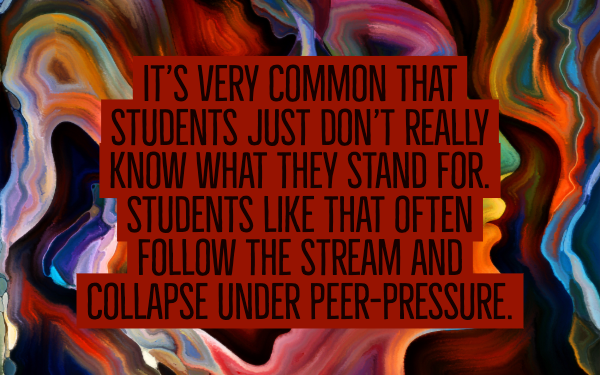
Developing a basic self-identity - Who Am I?
When we ask young primary school students to present themselves and say who they are, they often refer to facts. I live there, I have … siblings, my mom works…, my dad is a…, my pet is.., and so on. Katja Schiperheijn finds this is a missed opportunity, as students don’t think about who they really are in this exercise.
Lesson idea 2
 Push students to dig deeper. Ask about their interests and expertise. Give them two cards:
Push students to dig deeper. Ask about their interests and expertise. Give them two cards:
- One for their interests: whatever they would like to know or do, but can’t yet; someone/something they adore and want to know everything about; a country they want to visit desperately.
- One for their expertise, something they are really good at.
Let your students write both down on the cards. Start a conversation and let your students explain what they’ve written down. Then, hang the cards on a classroom wall. Let students look for other cards that might interest them to start a conversation. Let them open up to other students by talking about their interests with each other. If your students need help, they can look at the expertise cards and ask that particular student to lend a hand.
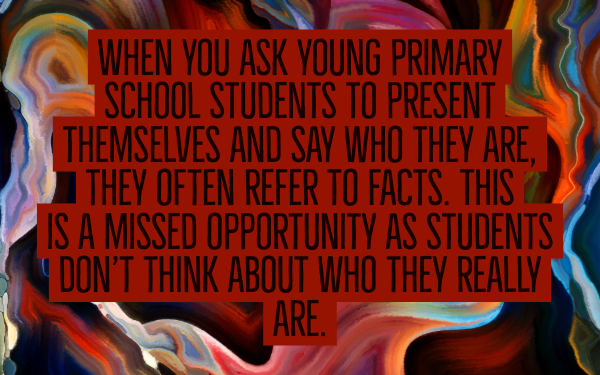
The impact of Social Media on a student’s self-identity
To encourage a student developing a self-identity we must take into account that social media doesn’t make things easier. We live in a society that rewards having digital friends, and we would go through great lengths to get more and more and more. Having Instagram followers and Facebook likes nowadays directly aligns with being popular or not. And yes, students value that more than they value themselves. So it’s hard to develop a self-identity in a world with identities you think you know or that are “filtered”.
This is an important lesson to teach your students. A discussion that needs to be held. How much do they value digital and social acceptance over being themselves? Who is the real person behind that social page? And how can you reflect it on your social page?
As Social media plays a huge role in our students' lives, we might as well include it in our lessons. Teach them how to digitally profile themselves in an honest way. Debate on what “an honest social profile” actually means.
Lesson idea 3
 Let your students introduce themselves, online, in 250
characters. It’s harder than you’d think. There are a lot of online learning
environments on which students need to create a profile. If you don’t have a
safe environment like that, just use little cards that are drafted to look like
an Instagram profile or another social platform.
Let your students introduce themselves, online, in 250
characters. It’s harder than you’d think. There are a lot of online learning
environments on which students need to create a profile. If you don’t have a
safe environment like that, just use little cards that are drafted to look like
an Instagram profile or another social platform.
Your students have to present themselves as unique as they are. Why would anyone want to be friends with them? What would it mean to have that student as a friend? Look at it as making a profile for a dating website. They’d want to present themselves in the best way possible without overdoing to avoid disappointments.
Lesson idea 4
 Think about how photoshop and photo filters on social
media distort a person’s true image. Those filters can make students think that
they’re not as beautiful as others.
Think about how photoshop and photo filters on social
media distort a person’s true image. Those filters can make students think that
they’re not as beautiful as others.
When you teach your students at an early age that filters are unrealistic (and even funny), your students' self-confidence isn’t influenced that much. A way to do this is to browse the internet with your students (in groups) and look for photoshopped pictures and wrongly edited YouTube videos. Then make a top 10 and show it to everyone. Fun guaranteed! Moreover, this exercise sharpens skills for online search.
You can also take pictures in class and let your students edit them by using Snapchat or other image editing app. What about letting your students edit the teacher’s profile picture. You get to choose the winner!
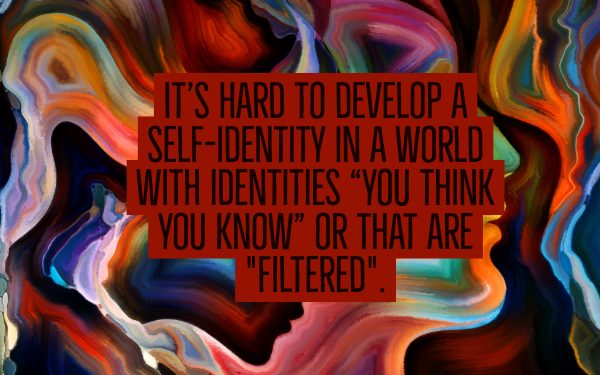
Using avatars to reflect self-image
An important of a student’s self identity is its self-image. Students need recognition, confirmation, self-confidence and the feeling of being competent and valuable. How students perceive these things reflect directly on their self-image, the image they have about who they are, who they want to be and who they should be.
A student quickly understands the difference between the actual self-image and the ideal self-image. The difference between both images determines a student’s self-confidence and wellbeing.
Truth is that it’s very hard for everyone to recognize and acknowledge their self-image, even for adults. And as you know, social media doesn’t contribute positively to our self-image either: they give an unrealistic image of reality. Perfectionism becomes the new benchmark.
Of course, online media can positively contribute to our self-image as well. Think about using avatars for instance.
Lesson Idea
 Start the first lesson of the year by presenting yourself
using an avatar that looks just like you. Ask your students to do the same. An
avatar reflects the looks of the students, and thus the self-image. In a lot of
cases, a student can also choose its avatar’s powers.
Start the first lesson of the year by presenting yourself
using an avatar that looks just like you. Ask your students to do the same. An
avatar reflects the looks of the students, and thus the self-image. In a lot of
cases, a student can also choose its avatar’s powers.
When students finished creating their avatar, let them talk about it and explain why they decided to give their avatar that particular look. Make sure to moderate the conversation in a positive way and encourage compliments.
Never force a student to show their avatar, and don’t mind starting an individual conversation with a student if you see some tension with a student. This lesson brings into the light a lot of emotions and feelings students have about their self image.
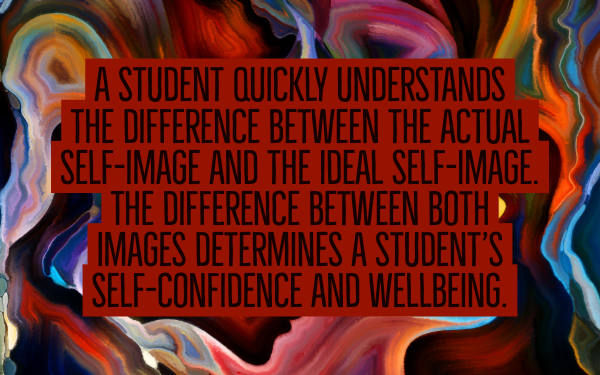
5 Avatar creator tools for your classroom
To help you with this activity, here are some free avatar maker apps you can use in your lesson about self-identity or self-image.
If you’re curious to see how this looks, here’s me:
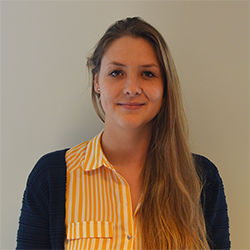
1. Bitmoji
 Bitmoji is integrated into tools such as Snapchat. It shows your Bitmoji in different settings, which makes it even funnier! When creating a Bitmoji or any other avatar, you could use a picture of yourself as help. It’s harder than it looks!
Bitmoji is integrated into tools such as Snapchat. It shows your Bitmoji in different settings, which makes it even funnier! When creating a Bitmoji or any other avatar, you could use a picture of yourself as help. It’s harder than it looks!
2. Avatar Maker
 As Avatar Maker is a web-based tool, you don’t need your smartphone for this, making it easy to get started. Like Bitmoji, it gives you more choices to add details, and has many possibilities.
As Avatar Maker is a web-based tool, you don’t need your smartphone for this, making it easy to get started. Like Bitmoji, it gives you more choices to add details, and has many possibilities.
3. Avaracha
 Avaracha is another web-based avatar creator just like the one above. Your choices in color are rather small, but you should manage to create something that represents yourself, even if it’s just a little bit.
Avaracha is another web-based avatar creator just like the one above. Your choices in color are rather small, but you should manage to create something that represents yourself, even if it’s just a little bit.
4. Powerpuff Yourself
 If you want to create a fun avatar without having to choose too much, this avatar creator is the best fit. It has limited choices and is configurated in just a few minutes. The fun thing about this tool is that you get to do a personality quiz afterward, and it shows you what kind of person you are. A good activity when you’re teaching primary school students about self-identity.
If you want to create a fun avatar without having to choose too much, this avatar creator is the best fit. It has limited choices and is configurated in just a few minutes. The fun thing about this tool is that you get to do a personality quiz afterward, and it shows you what kind of person you are. A good activity when you’re teaching primary school students about self-identity.
5. Avataaars
 This one is harder to configure, so it’s better to use it with some older students. It doesn’t have many choices, and that can be an advantage when you see students find it an uncomfortable activity.
This one is harder to configure, so it’s better to use it with some older students. It doesn’t have many choices, and that can be an advantage when you see students find it an uncomfortable activity.
Wrap up
I hope you know now how you can help your students develop a self-identity. Let them positively discover their self-image by using avatar apps. Of course, there are many more inspiring things you can do to cope with your students' wellbeing and personalities. If you want to help them express their own emotions check out this post.
